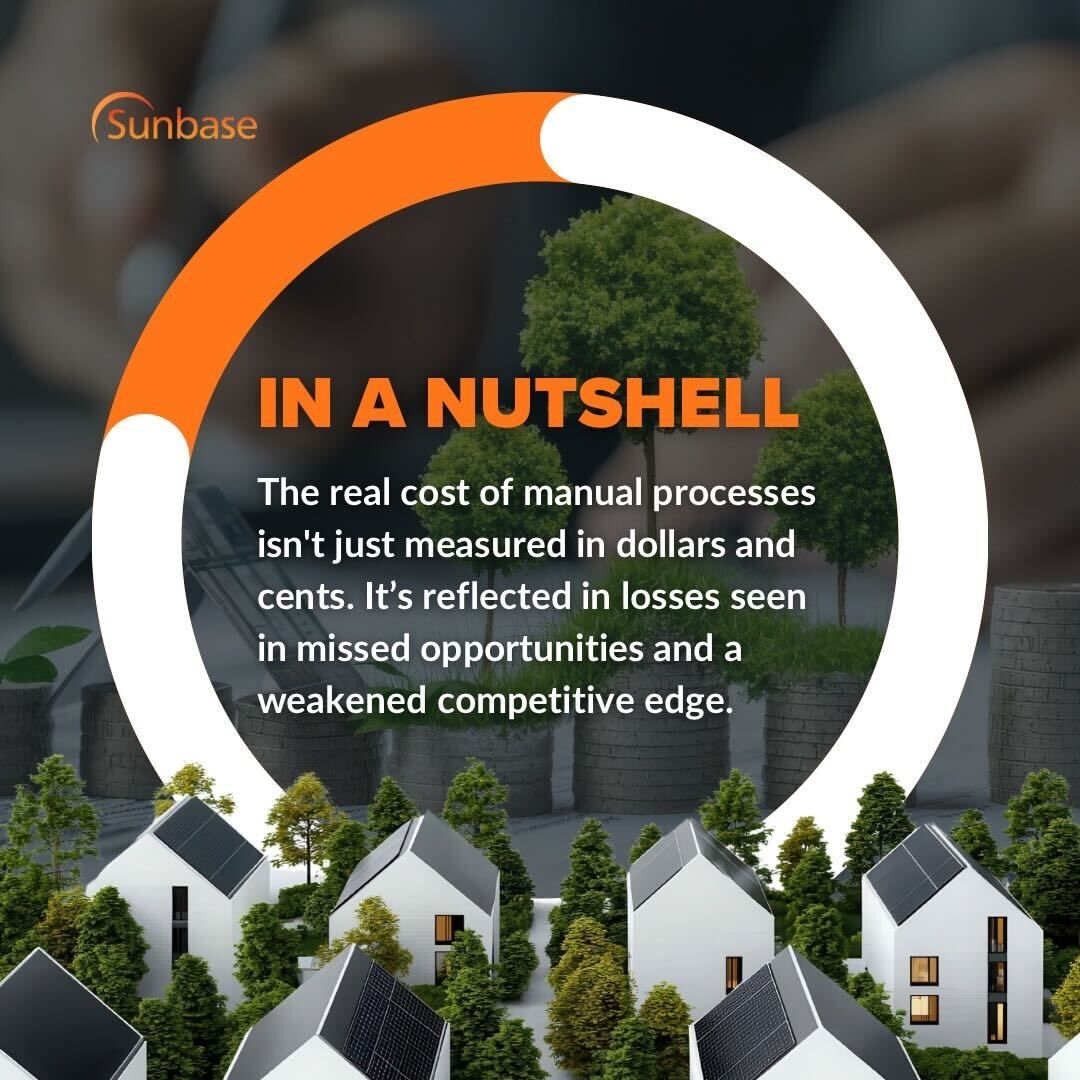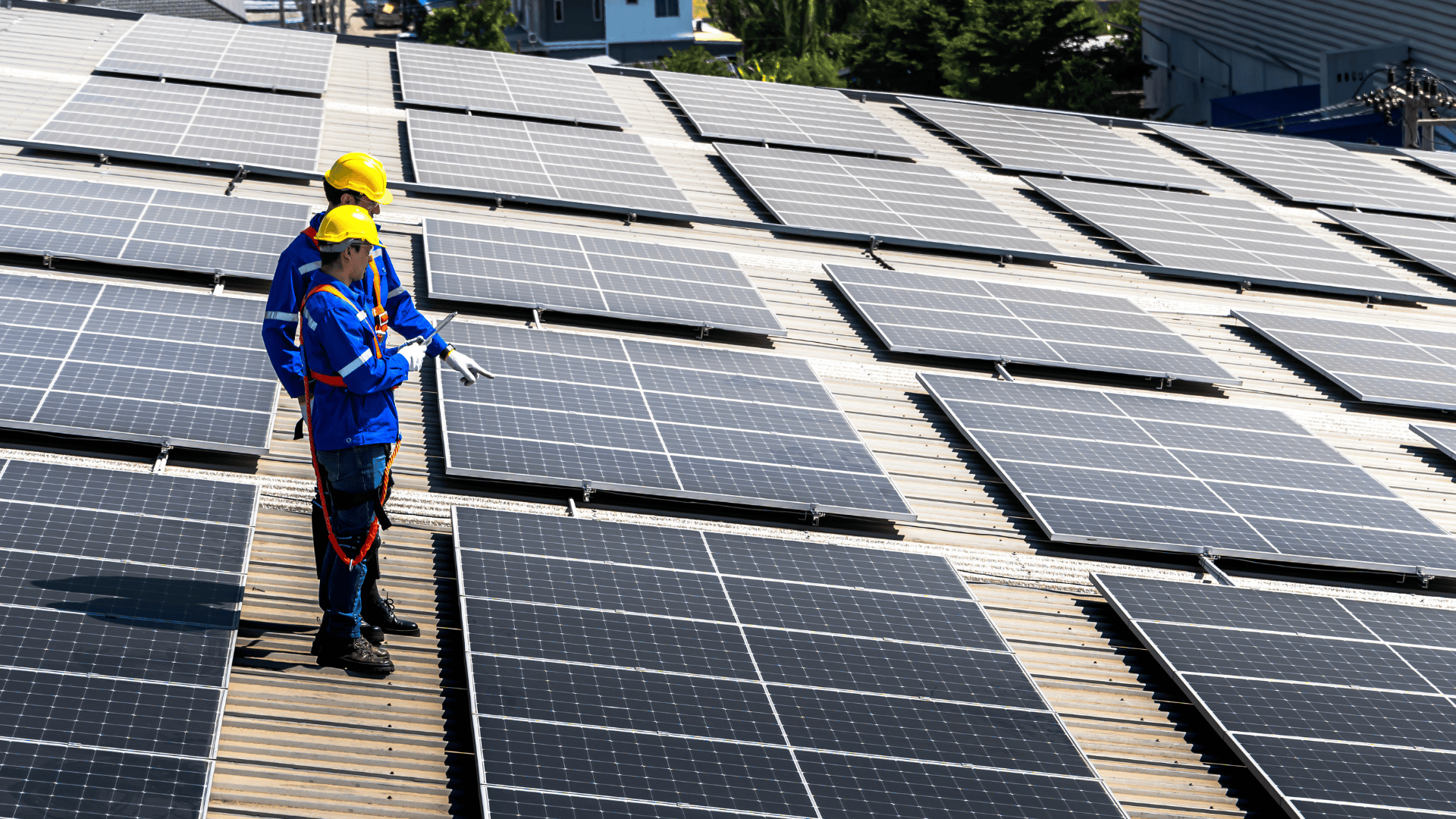Manual vs. Automated Proposal Management: Which One Saves You More Money?
February 11, 2025
A question for all the solar proposal managers: What’s the cost of a single mistake in the proposals? And the common answer would be: A lost customer!
When you carefully calculate the cost of materials, labor, and overhead, you often overlook the most significant cost: your proposal process! Many businesses don't fully realize the cost of manual proposal management, including lost productivity, mistakes, and inconsistent branding.
But the new tech climax is here; automation is transforming the solar proposal development process. Curious?
Let's take a panoramic view of the manual and automated proposal management process. This will help you determine which approach maximizes your ROI and frees up your team's time for other tasks.
Key Takeaways
- Solar proposal management involves crafting and monitoring proposals for solar projects, which is essential due to the industry's unique demands and complexities.
- Manual processes are time-consuming and error-prone and negatively impact customer experience, making them costly.
- Automated proposal management speeds processes, boosts sales effectiveness, ensures accuracy, allows customization, offers real-time updates, and integrates with CRM and financial tools.
- Automated systems provide better ROI over manual methods by lowering direct and indirect costs, leading to favorable long-term financial outcomes.
- Solar businesses can benefit from specialized tools like Sunbase to gain a competitive edge over rivals.
The Basics: What is Solar Proposal?
A solar proposal is a thorough plan that describes how a solar energy system will be installed.
It includes the system design, site evaluation, cost analysis, schedule, financial benefits, and warranties.
The proposal assists prospects in understanding the benefits, costs, and logistics of going solar.
> Why It Matters? Addressing The Solar Industry’s Unique Needs
Innovations in technology, decreasing solar panel prices, and increasing environmental awareness drive the global adoption of solar energy. Solar energy plays a significant role in the transition to renewable energy, which governments, corporations, and the public alike are recognizing.
As the solar market grows, a well-crafted solar proposal becomes of utmost value. A solar proposal is an in-depth itinerary describing a solar project's advantages, potential, and viability.
An effective solar proposal is more than a technical document essential for securing funding and gaining the support of investors, communities, and stakeholders. It connects sustainable futures with execution and proving solar projects' potential.
Looking for proposal management techniques? Read our blog for Maximizing Efficiency: Top
Strategies for Streamlining Proposal Process with Solar Proposal Software.
> Statistical Highlight

A HubSpot study found that proposals with customized content based on the prospect's unique requirements and difficulties have a 41% higher chance of success than generic or one-size-fits-all proposals.
Let’s examine two methods for creating solar proposals: manual and automated. Continue scrolling to understand why a modern approach is essential for the growth of your solar business!
The True Cost of Manual Proposal Management
A manual process for managing solar proposals involves manual data input, on-site visits to evaluate potential solar array sites, sketched diagrams, intricate spreadsheet computations, and lengthy document formatting.
> How Does It Work?
While managing proposals manually may appear simple, the actual costs extend well beyond what is immediately visible. Here's how it works:
- Collecting customer information and energy usage data manually.
- Using spreadsheets or basic design tools to create system layouts and financial calculations.
- Drafting proposals using word processors or PDF editors.
- Sending proposals via email and tracking responses manually.
- Following up with customers via phone calls or emails.
Although this process may appear manageable for a small number of proposals, it quickly becomes overwhelming as the number of leads increases.
> What Are the Hidden Costs?

1. Time-consuming and labor-intensive
Generating one solar proposal by hand can require hours if not days.
Each step demands considerable effort, from collecting data to designing the system, verifying figures, formatting documents, and reviewing every detail. This translates into a massive time investment for companies managing dozens or even hundreds of proposals monthly.
- Cost: Reduced productivity and longer sales cycles result in fewer installations.
2. Higher risk of human error
Manual processes = Highly susceptible to errors.
Whether it’s a miscalculation of energy savings, an error in system design, or a typo in the proposal, even small mistakes can result in significant consequences. So, what do these errors lead to?
- Cost: Responding to customer dissatisfaction, revising proposals, and handling customer complaints will all consume your time and resources.
3. Impact on customer experience
Successful businesses follow one golden rule: "When a customer comes first, the customer will last!" So the real competition starts here!
Customers will always expect fast, accurate, and professional proposals. Generic proposals often result in delays, inconsistent communication, and a lack of personalization, which can frustrate potential
customers and lead them to choose competitors.
- Cost: A damaged reputation can hurt the long-term growth of your brand.
4. Inefficient tracking and follow-ups
Keeping track of proposal statuses and following up with customers can be a bit tricky without centralized project management software. It's easy to miss important details along the way!
In addition, slow follow-up processes lead to fewer conversions and a longer sales cycle.
- Cost: Lost revenue and, on top of that, wasted marketing spent on leads that aren’t properly nurtured.
Take a look at Why Solar Sales Aren’t Just About Panels—It’s About Solar Proposals.
Automated Solar Proposal Management: A Catalyst For Efficiency
An automated solar proposal management system leverages software to simplify tasks. It automates calculations, creates designs, and generates professional proposals with little manual input, leading to quicker turnaround times, enhanced accuracy, and greater efficiency.
> How does Automation work?
Automation removes the tedious and time-consuming tasks from your hands and assigns them to the "hands" of software.
Here's how it works:
- Data input is simplified, so automated systems extract data directly from databases or CRM platforms rather than manually inputting customer information, system specs, or financing choices.
- Proposals are created using pre-built or customizable templates tailored specifically for the solar sector.
- Financial models, ROI projections, and energy savings are calculated instantly based on real-time inputs.
Did you know? Over 30% of sales-related activities can be easily automated. (McKinsey & Company)
> How Does It Speed Up The Process?

1. Enhanced Sales Effectiveness
The system generates visually appealing and technically precise proposals using pre-designed templates and customer data.
All you need to do is plug in customer data (energy usage, roof specs, budget), and the software generates a polished, personalized proposal in minutes.
The magic: Sales teams spend less time typing and more time selling!
2. Accuracy and Consistency
How do you focus on saving time while ensuring that numbers are in the right place? When a decimal is misplaced or an incentive quote is outdated, it can even put a deal at risk.
But with automation, there's no space for error! The system easily auto-populates data from verified sources (e.g., utility rates and tax credits), ensuring every calculation is precise.
3. Easily Customizable
Generic proposals yield generic results. Automation allows for personalization without the hassle.
With automation in your hand, you can easily drag and drop modules to incorporate personalized financing options, arrange panel layouts, or include local weather information.
4. Real-time updates and tracking
Have you ever lost a deal because of a missed follow-up? Automation keeps the momentum going.
You can now easily track the status of your proposals in real-time! You'll know when they need a little follow-up. Plus, don’t worry about missing out; automatic reminders will remind your clients before you!
5. Integration with CRM and financial tools
Switching between apps is a silent productivity killer. Automation helps them work together in harmony.
The system seamlessly connects with your CRM, financial calculators, and other platforms, ensuring that all your data flows seamlessly together.
You won't have to switch between tools or duplicate efforts. Now, everything you need is in one place, saving time and reducing frustration.
So, at the end of the day, you have a professional proposal ready to be sent to your customer and extra hours for other tasks!
To help you understand better, here's A Complete Guide to Using Solar Proposal Software: From Quoting to Contract
Which One Saves You More Money?
Let's find out!
1. Breaking Down the ROI
We must consider the initial investment and long-term returns to assess which method saves more money.
Manual processes may seem cheaper upfront, but hidden costs can erode profits. Automation needs an initial investment in software and training but offers increased efficiency, fewer errors, and higher close rates.

Statistic Highlight: Early adopters of sales automation frequently observe more customer interaction time, enhanced customer satisfaction, boost efficiency of 10 to 15%, and a possible sales increase of up to 10%. (McKinsey & Company)
2. Direct Costs
Manual: Labor is one of the main direct costs. Consider your sales team's hourly rates and the time they dedicate to developing each proposal. This encompasses data gathering, calculations, writing,
formatting, and a lengthy review process.
Automated: Direct costs consist of the subscription fees for the solar proposal software and the upfront investment in training your proposal team. Nonetheless, the savings from reduced labor hours and increased output often balance out these expenditures.
3. Indirect Costs
Manual: Without standardized templates, this approach hampers a professional brand image and affects engagement with prospective clients. For example, a typo in calculations or system sizing can cost dollars plus rework. Delayed proposals result in missed deadlines for tax credits and can test customer patience.
Automated: Proposal management software offers major advantages, such as automated pricing and improved collaboration. Collectively, these advantages build customer trust, leave no room for misconceptions, and help boost retention.
4. Long-Term Financial Implications
Manual:
- Scalability: Adding 10 clients? Hire another representative. In the end, it limits your growth!
- Adaptability: Revising proposals to comply with new regulations or products requires weeks of retraining.
Automated:
- Scalability: Helps you handle 10x the workload with the same team.
- Future-Proofing: Immediate updates for pricing, incentives, or compliance (e.g., changes to IRS tax credits).
Did you know? Automation can increase a sales team's capacity by approximately 20 percent. (McKinsey & Company)
> The Verdict: Which One Should You Choose?
Using a manual approach may appear appealing as it's inexpensive if you’re just starting out or managing low volume.
However, for any solar business that is committed to growth, automation is the clear winner for an effective proposal management process.
Here’s why:
- Short-Term: The ROI of automation surpasses its costs within months.
- Long-Term: It removes hidden expenses, increases revenue, and secures your operations for the future.
The decision is now up to you!
Why Solar Businesses Need Specialized Tools Like Sunbase?

Scalable for any size team, Sunbase helps you present your business in the best possible light.
With Sunbase, proposal management professionals can easily:
- Input Prospect's Monthly KW Usage Data: Create proposals based on average monthly utility consumption.
- Draw Solar PV Arrays On-Site Locations: Select rooftops and capture area for PV systems.
- Create Highly Compelling Proposals: Use professional materials to communicate your advantages effectively and persuasively. Allows easy e-signing or email for signatures.
Sunbase's customizable backend ensures your branding is always on point, and the templates make it easy to showcase the value of your solar solutions.
In a nutshell

The question isn’t whether you can afford automation but rather, 'Can you afford not to automate?'
Software for the solar proposal creation process is the basic requirement for solar enterprises trying to improve their sales efficiency. Modernizing your project management approach mitigates these risks and positions your business for growth, efficiency, and improved customer satisfaction.
The real cost of manual processes isn't just measured in dollars and cents. It’s reflected in losses seen in missed opportunities and a weakened competitive edge.
Discover More About Sunbase
The solar industry waits for no one. Invest in automation today, or watch competitors outpace you tomorrow.
Sunbase helps you present a winning proposal that no one can refuse! Contact us here!
FAQs
1. How do automated tools enhance teamwork during proposal creation?
Automated tools streamline the proposal creation process, enabling team members to collaborate in real-time. This approach reduces bottlenecks and ensures alignment among all participants in careful planning, from the proposal coordinator to the sales team. The outcome? A faster and more integrated process that results in successful proposal management.
2. How does automated proposal management software support a proposed solution?
Automated proposal management guarantees that your proposed solution is displayed clearly, consistently, and professionally. Utilizing tools such as dynamic templates and real-time data integration, automation reduces errors and improves the quality of your proposals, helping you win over clients. This accelerates the sales cycle, guarantees more uniformity and customization, and increases customer satisfaction.
I agree to receive marketing messaging from Sunbase at the phone number provided above. I understand data rates will apply, and can reply STOP to OPT OUT.
Company
Industries
Features
Copyright ©2021
Terms of Service |
Privacy Policy







